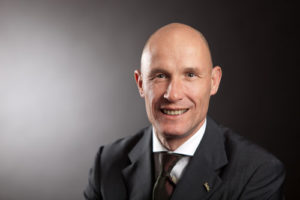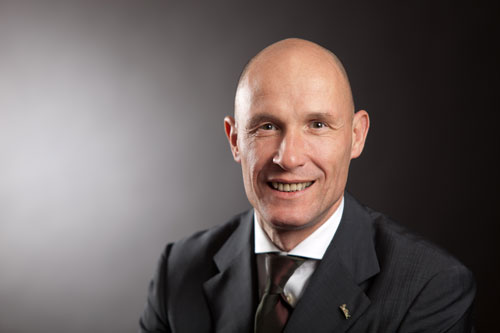He’s been with the group for 20 years and in April this year took over from Simon Barlow as Carlson Rezidor Hotel Group’s president Asia-Pacific based in Singapore. Thorsten Kirschke tells Raini Hamdi he is open to franchising and aims to expand the chain’s two new brands in the region

Your predecessors created a lot of growth. By year-end, the group will operate more than 100 hotels across Asia-Pacific. How do you hope to top that?
There is still a lot of demand for branded, reliable hotel brands. Markets like India and China drive the growth because of their sheer size but there are other pockets such as Indonesia, the Philippines and Thailand, and new sparks, for example Myanmar or even Bangladesh, where many international chains are trying to make an entry. We are present there (Bangladesh) with one hotel in operation and another in pre-opening.
Australia, the surrounding New Caledonia and New Zealand are yet another great potential for branded inventory.
What’s your strategy?
Three-pronged. One is to deepen our strategic alliances. They come in several shapes: some are on the back of an articulated contract, like a JV, others are more built around relationships, but no matter what they are, they are fundamental to development in this part of the world.
For example, the SM Group (in the Philippines) is a contractual agreement with the commitment for development over several years but, as we know, it is a private family that is at the base of this company. Here’s where Carlson Rezidor has a huge advantage because we ourselves are a private company and we do understand the values that drive a family business. Thereby, the relationship aspect with that company becomes more important. Understanding the ‘mechanics’ and not being forced to report to a stock exchange on a quarterly basis is of great value.
What’s the second prong?
To broaden our business model. We see the opportunity for controlled franchise development, and to target conversion opportunities, which previously were not as clear on our agenda for growth.
For example, we are evaluating a multiple-unit franchise agreement in China with a well-respected group that owns one of our properties today and several others. This could be a fantastic recipe for future growth, provided our partners demonstrate the capabilities of operating the hotel within the brand promise.
Has Carlson Rezidor done any franchising in Asia-Pacific to date?
In India, there is a master licence agreement for Country Inns & Suites with CDMS (Country Development & Management Services, a joint venture between Country Inns & Suites and Chanakya Hotels since 1998). Other than that we have stayed away from franchising which is precisely why I believe there is opportunity for future growth as we see capabilities evolve in this part of the world.
How have capabilities evolved?
We see owners becoming more ‘educated’ as the hospitality industry grows in Asia-Pacific. Some of them have started to form their own management companies.
The China group for example has started to build its own management capability, as in people and resources. We have a long-standing relationship with the company; we have known the properties’ GMs for many years. So there is an opportunity to expand this relationship under the umbrella of franchising.
India too, is a long-standing relationship. We have deep trust in each other. They were the founding members in driving our presence today in India. We are the largest international hotel operator in India and this would not happen if it hadn’t been for the mutual trust. This proves that franchising as a business model and vehicle for growth has its merits even in developing markets and particularly here in Asia-Pacific.
How do you intend to franchise and is it only for Country Inns & Suites?
We would not give an exclusive master licence either for a brand or a territory – that is one step ahead in this business model, particularly in China.
We’re open to franchise all brands, but the higher the segmentation, the more complex it becomes. In China, we are considering the higher-positioned brands, Radisson and Radisson Blu, for franchising, but again it is case-by-case evaluation. What I’m saying is we are not ruling out franchising anymore. We would be negligent if we do not consider the increased capabilities investors have assumed over time, and franchising as an avenue for growth as a result of it.
So selective franchising and conversion targeting is the second dimension we are pursuing for further growth in the Asia-Pacifc region.
Why are conversion opportunities on your agenda now?
A report some years back identified a list of conversion opportunities in Asia-Pacific but the number then was not very large. We see that growing and, of course, we know conversions are lucrative and fast-to-market, so we have identified this as a platform to grow.
These can be existing hotels where agreements are expiring, or conversion of potentially non-branded to branded assets, or on the rare occasion, re-adaptive use of existing buildings. As the real estate market in Asia-Pacific matures further, we’ll see more of that going forward.
So what’s the third prong?
The third is the introduction of new brands into market, Quorvus Collection and Radisson Red (TTG Asia e-Daily, July 25, 2014). Quorvus is a luxury brand by affiliation, catering to hotels that are clearly looking for a platform and distribution while protecting their heritage and identity. Red clearly taps into a niche that has evolved in the last number of years and is making its way into developing markets around the world. It speaks to changing demographics – we know that today the younger generation, which forms almost a third of tomorrow’s travellers, uses hotel facilities differently than maybe myself or other generations before me. It is much centred on community and communality. It is an upscale select offering – there are reduced services and facilities but it is upscale from the build-out to the quality. I call it lifestyle select.
What happened to your luxury partnership with Missoni?
Missoni was defined as a fashion/lifestyle brand in partnership with the Missoni family but we are dissolving the relationship for several reasons I wouldn’t want to go into at this point. We are ‘folding’ two of the former Missoni hotels (GV Royal Mile Hotel Edinburgh and Symphony Style Hotel Kuwait; the collection also now has a third member, The May Fair Hotel London) into the Quorvus Collection. At this point, too, we will not create another distinct fashion/lifestyle brand.
Is it a fair criticism that chains just dream up brands so they can get management contracts?
Every company has to grow. Whether it is retail, fashion or liquor, companies are expanding their portfolios continuously, not for sake of growth but in response to new and evolving demand from changing demographics, markets and different consumer trends around the world. Ikea is not what it was 20 years ago, and we can quote many other companies from other industries that have evolved over time.
Of course underneath all that is the looming danger of commoditisation when we bring new brands to the market and I know this is also on the minds of my colleagues around the world.
But I think the industry is doing a good job.
Really? I see a lot of sameness in the rush to cater to Gen Y, for example.
Of course you’d find global international chains collectively responding to the changing demand – that is only logical. The question then becomes who is delivering and executing to the best of the consumer expectations. You can’t just develop a brand on a piece of paper, you must be able to deliver it.
As customers change, won’t your older brands be sidelined by the new brands?
No, we have taken great effort to rejuvenate our portfolio – our Radisson Re-imagined initiative was probably one of the largest brand renovation projects. We also developed the fourth generation of Country Inns & Suites so that the brand is more relevant to younger travellers.
So we do always manage our brands to stay relevant but of course every brand can only ever evolve so much in its rightful positioning, and there is always an opportunity to launch new ones. The upscale select brand, for example, was not an opportunity that existed 15-20 years ago, when mostly upscale, full-service hotels were built. That was also the time all the great brands of the world were travelling globally.
So what’s next – a Green? Is there another gap the group wants to fill?
I know there are still segments we’re not covering today – we do not have a brand in the economy/budget sector, for instance.
This article was first published in TTG Asia, October 10, 2014 issue, on page 9. To read more, please view our digital edition or click here to subscribe




















